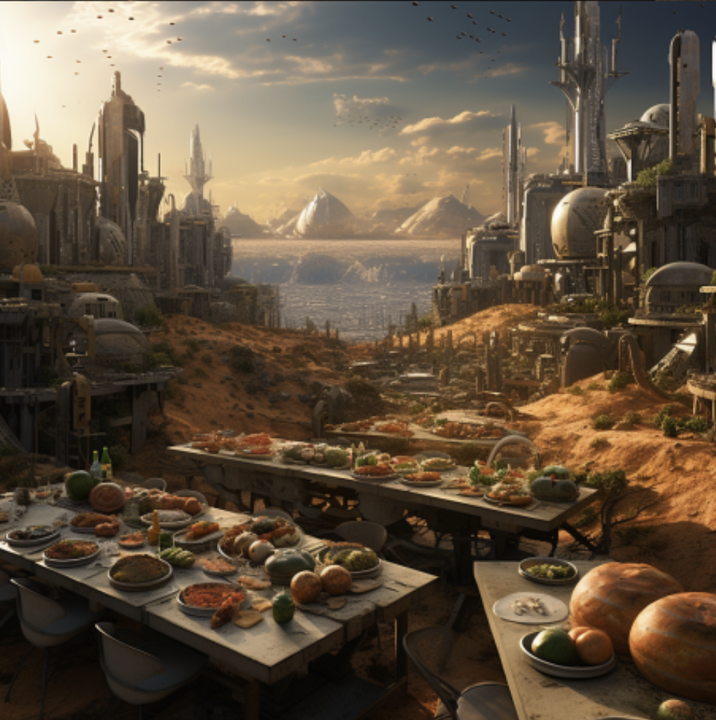Image: Midjourney, scenarioDNA. If this is the current image for "food security for humans through time and space," we need to think smarter now.
Recognize the Liminal States
Aren’t we always moving through time and space? A liminal state of existence is more our norm, rather than the places we aspire “to land.” Once, we land we already have the next idea in our sights.
This places research and planning in a predicament. Projects must end somewhere so they can be acted upon, campaigns can be created and products can be built. Shouldn’t they?
But, this shouldn’t be the case. This is similar to the fact that no one warns you that building or designing a dwelling is not a task with a completion date.
"Home" is a process that requires perpetual tending.
So, why are we always set on landing? Landing is a mistake. Living is kinetic. We are in constant change, and we need “things” at certain moments in time.
The new normal of the post-pandemic world has made this ambiguity apparent to most people. If we return to the anthropology definition of liminality, we find that ambiguity occurs as one moves from one right of passage to another. It beckons anticipatory thoughts: What’s next? What is coming?
We can wring out uncertainties and mitigate risk but the state of ambiguity itself is very human.
So too should our research be kinetic. Our frameworks need to allow for time and space. Building time and space into our processes allows us to maintain resiliency and get somewhere profound in our insights and forecasting.
Having a framework that accounts for time and space allowed us to see early on that curbside access points and meal hubs were a residual trend that quickly showed their relevance during Covid lockdowns.
Whereas, fortified co-op policies and shadow worlds for food were disruptive trends that required us to think on our feet. (This is explained in our Food Forward Report from 2020. It is available for complimentary download.)
Quickly, we saw a shift as policymakers recognized that food hubs were not simply food giveaways and began to see food as public infrastructure. The most recent evidence of this is in Hawaii. Even concepts such as curbside have begun to extend to curbside residential pick up for food waste. Buffalo, NY, offers one example.
Now, we see food co-ops open in Boston and delivery service unexpectedly added to a co-op in Harlem. These are not insignificant developments. And this past February, Shadow Negotiators was published. It tells the story of how UN organizations shape the rules of world trade for food security, as they press forward outside traditional conventions.
Even the most traditional research labs are changing now.
The need and ability to analyze more data is requiring planners and designers to rethink the research environment to see where we should be going and not double down on what we know.
One of the most interesting trends is the integrative research environment. Modern science has become more social and productive by including different perspectives to foster collective thinking and holistic approaches to problems.
